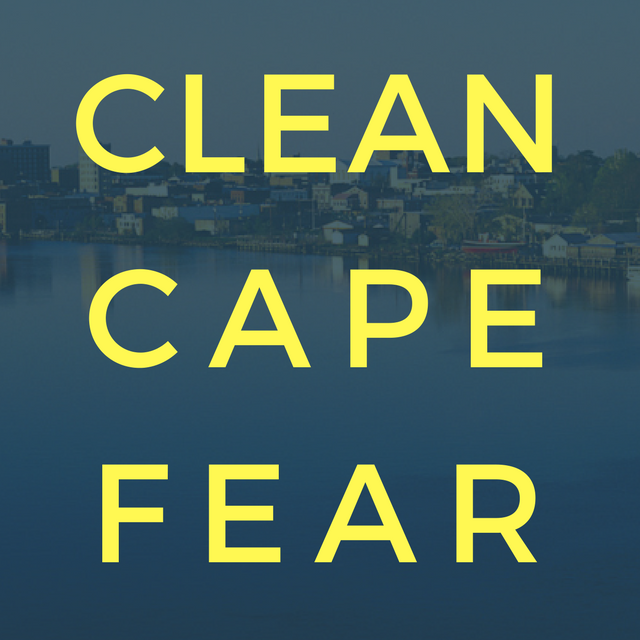EPA Test Under Reports Levels of PFAS in our Tap Water
The Guardian just released a new report showing current standard EPA tests are NOT capturing the full scope of PFAS contamination in public drinking water—including a sample taken from our region.
"The Guardian found that seven of the nine samples collected showed higher levels of PFAS in water using the test that identifies markers for PFAS, than levels found when the water was tested using the EPA method..."
The Leland, NC sample came from Navassa, NC--a predominately black community who will not get access to better filtered water for at least another year or two at best.
The Town of Navassa transferred ownership of its water utility to Brunswick County two years ago.
The Town of Navassa ultimately made this decision with our citizens in mind but also, with the intent in rendering access to water and sewer service more affordable, for the greater Brunswick County region.”
The County assumed ownership and operational responsibility of the water and sewer system July 1, 2020.
Unfortunately, Brunswick County continues to have some of the highest levels of PFAS in municipal tap water in the nation. Here's a graphic we created using regular test results BCPU provides on their website.
~200,000 residents get their water from Brunswick County Public Utilities. These residents are seeing their water bills go up to pay for the needed technology to filter out all the PFAS. They're paying more for some of the highest levels of PFAS in tap water in the nation. Brunswick County and Cape Fear Public Utility Authority, which serves most of Wilmington, NC, are currently suing Chemours to recover expenses for these costly upgrades. Chemours is actively fighting this lawsuit.
What today’s Guardian article reveals is the true threat we’re under from PFAS contamination in drinking water.
“We’re looking for and studying less than 1% of PFAS so what the heck is that other 99%?” Peaslee asked. “I’ve never seen a good PFAS, so they’re all going to have some toxicity.”
We've known this for a few years now. We suspected there was more PFAS in our tap water than what local water utilities could show us based on a report submitted by Chemours in June 2020. Both Brunswick County and CFPUC regularly sample our tap water for more PFAS than what EPA currently requires. It's nice to have it confirmed and documented for the nation to see.
This article also illustrates how this is not just a NC problem—it’s a nationwide public health crisis. When our friends in New Hampshire spent millions to remove PFOA and PFOS from their tap water it is disheartening to know those upgrades did not fully capture all the PFAS in their drinking water.
“In water from Portsmouth, New Hampshire, the levels were 10 parts per trillion (ppt) found in the EPA 537 test and 164ppt found in the TOF test.”
So what can we do? Here’s a few things communities can do:
Demand their water districts test for more PFAS than the standard EPA 537 method allows. Eurofins currently has the most comprehensive commercially available test for PFAS. They test for 70+ different PFAS.
Demand water districts lobby for stronger source control of PFAS releases. State and federal water associations have chronically worked against the interests of public health by weakening the Safe Drinking Water Act and EPA’s ability to regulate new contaminates in drinking water. This blog from NRDC explains the history.
Make sure your water district is investing in the most health protective treatment technologies available at removing PFAS. Congress recently passed a bipartisan infrastructure bill with $10 billion in funds to specifically address PFAS contamination in drinking water. This money must be spent wisely but if communities are not testing for the full scope of PFAS in their drinking water they won’t know to upgrade their treatment processes to fully remove all PFAS in the water.
Clean Cape Fear is also demanding NC DEQ set strict discharge parameters around Chemours so our downstream utilities and ratepayers are not forced paying to clean up PFAS from our tap water, air, soil, and food supply. We collected over 1,000 signatures on a petition demanding NC DEQ hold public hearings on a new draft permit Chemours needs to continue building their barrier wall. We gained support from Cape Fear River Watch and SELC who sent letters of support for our request. NC DEQ granted our request and hosted an in-person public hearing in downtown Wilmington in June. We worked hard to get the community to show up and give public comments and that is exactly what happened. A virtual public hearing was also held for those unable to attend in-person.
We will keep fighting for accountability and make sure our community and others can be made whole.


